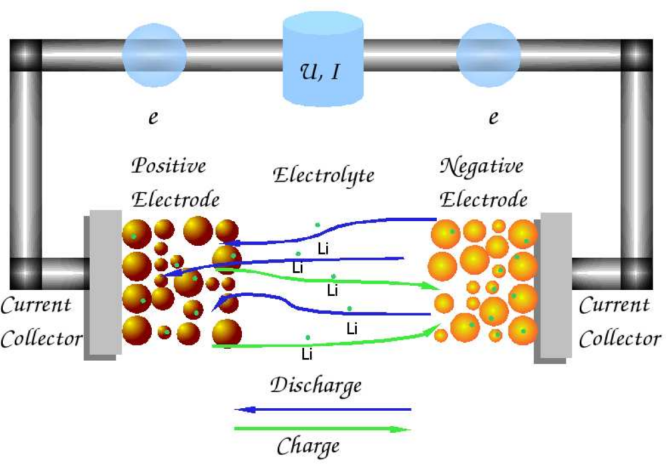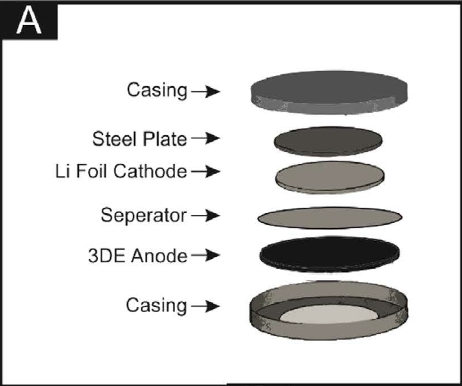Collaborative research from the UK’s Manchester Metropolitan University and University of Chester, and Central South University in China, demonstrates the use of graphene based PLA to make energy storage devices. The study proves the viability of a simpler, and cheaper way to make rechargeable batteries that can be used to store renewable energy.
Animated schematic of a recharging battery. Clip via Riley Senpai on YouTube
Rechargeable batteries – how do they work?
A Lithium-ion battery (also known as a Li-ion battery) is the removable power pack often found in digital cameras, UAV’s and phones for example. The battery is composed of a positive electrode (seen left in the image below), and a negative electrode (seen on the right).

When powered, positive lithium ions are naturally attracted to the negative ions on the opposite side and they move to it.
Eventually the negative electrode becomes so saturated with positive ions that it can’t fit any more into it, and so the battery runs out of charge.
To recharge, an electric current is passed through the current collectors to force the positive electrodes back to the other side.
A simpler solution
The 3D printed disc electrodes demonstrated in this paper simplify this Li-ion setup as they don’t require a current collector. They also don’t require further post production or curing after printing.
3D disc electrodes (3DEs) are 3D printed in graphene laced BlackMagic3D filament from Graphene 3D Lab Inc.

These 3DEs make up one layer of a freestanding anode.

Once pieced together, the freestanding anodes are successfully used inside Li-ion batteries.
The anodes are also evaluated for their ability to produce hydrogen, a process typically performed by expensive platinum electrodes. Though incapable of producing the gas as efficiently as platinum, a 3DE shows “unexpectedly high catalytic activity” in the hydrogen evolution reaction (HER) process.
The study notes,
In terms of this 3DE being used as a Li-ion anode and a solid-state supercapacitor the authors understand that the output is not highly competitive with current literature, however one must consider that in reality this anode/supercapacitor is comprised of only 8% graphene and 92% thermoplastic (PLA), and yet, still works as a battery anode/supercapacitor material! It should be noted that future work will examine a range of percentages and bespoke architectural structures.
3D Printed Graphene Based Energy Storage Devices is co-authored by Christopher W. Foster, Michael P. Down, Yan Zhang, Xiaobo Ji , Samuel J. Rowley-Neale, Graham C. Smith, Peter J. Kelly and Craig E. Banks. The research is open access, published by Nature in Scientific Reports.
Why produce different batteries?
As the use of renewable energy sources continues to grow, there is a heightened demand for a means to store that generated power. Having more flexibility with the design and the materials used in batteries enhances the overall sustainability of renewable energy as a possibility.
Microbatteries, for use in minute devices, have also been 3D nanoprinted by Jennifer Lewis’ research group at Harvard University. To stay up to date with 3D printed graphene research, sign up to the 3D Printing Industry newsletter, and follow our active social media channels.
Featured image shows a pride of Li-ion rechargeable batteries for Canon cameras. Photo by Rob Brewer, rbrwr on Flickr



